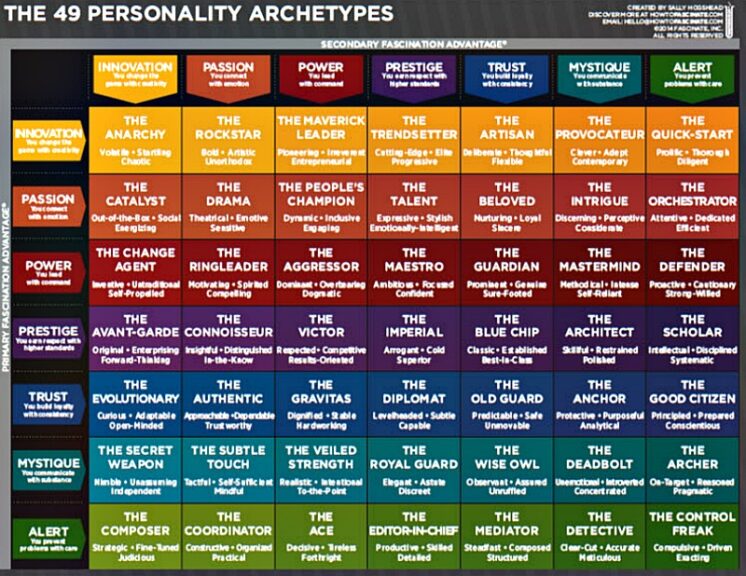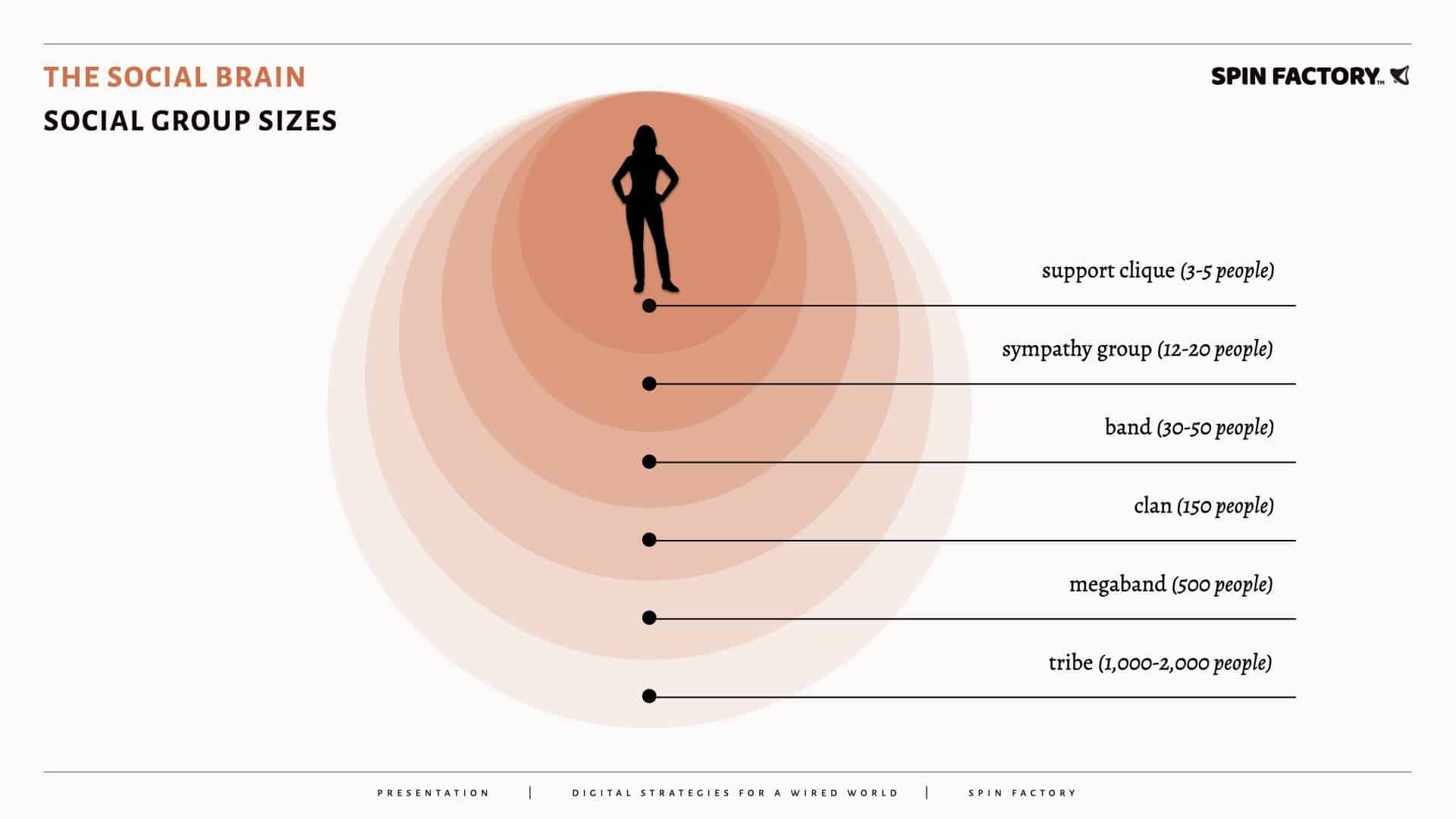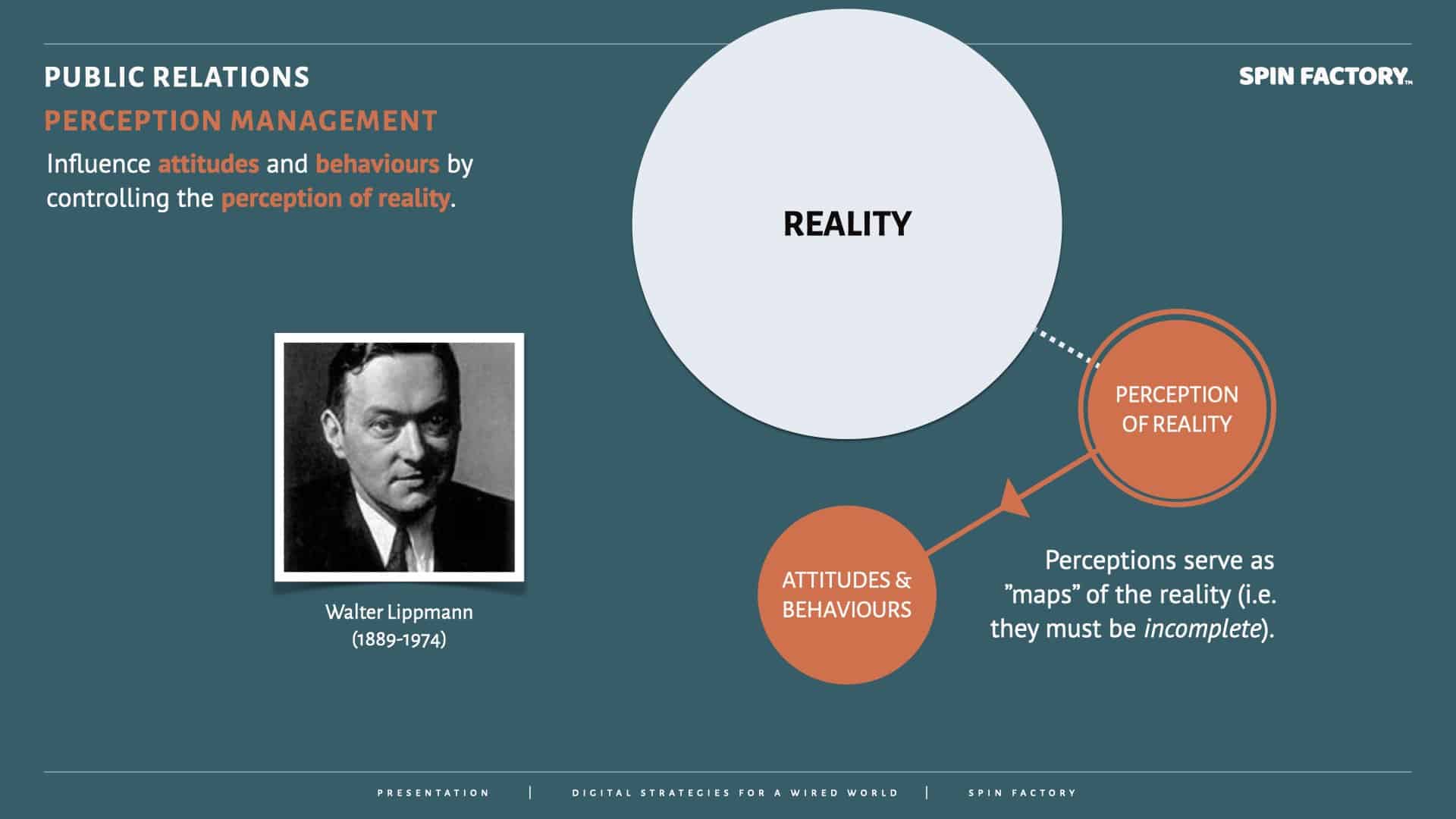In PR, we strive for attention.
But how does attention work?
Are there different types of attention?
What does science say about attention?
Here we go:
The Anatomy of Attention
Attention is an essential component of public relations:
An organisation, starved of attention, trust, and loyalty, is compelled to wage a perpetual struggle for its continued existence.
And it’s not just organisations. We all seem to crave attention in some form or another:
“People want to be loved; failing that admired; failing that feared; failing that hated and despised. They want to evoke some sort of sentiment. The soul shudders before oblivion and seeks connection at any price.”
— Hjalmar Söderberg (1869−1941), Swedish author
It’s fear of social isolation—and attention starvation.
Types of Attention
But what constitutes ‘attention’?
“Attention is a complex, real neural architecture (‘RNA’) model that integrates various cognitive models and brain centers to perform tasks like visual search.”
Source: Trends in cognitive sciences 1Shipp, S. (2004). The brain circuitry of attention. Trends in Cognitive Sciences, 8, 223 – 230. https://doi.org/10.1016/j.tics.2004.03.004
Each of the below terms refers to a specific aspect or type of attention (“mental bandwidth”), a complex cognitive process. 2Schweizer, K., Moosbrugger, H., & Goldhammer, F. (2005). The structure of the relationship between attention and intelligence. Intelligence, 33(6), 589 – 611. … Continue reading
Let’s explore different types of attention:
Each type of attention is likely to play a role in how we interact with and process information from our environment, and understanding these different aspects is key in fields like psychology, neuroscience, and education.
Learn more: The Anatomy of Attention
The Languages of Fascination
Author Sally Hogshead created the concept and the visual representation of the languages of fascination. Discover more at howtofascinate.com.
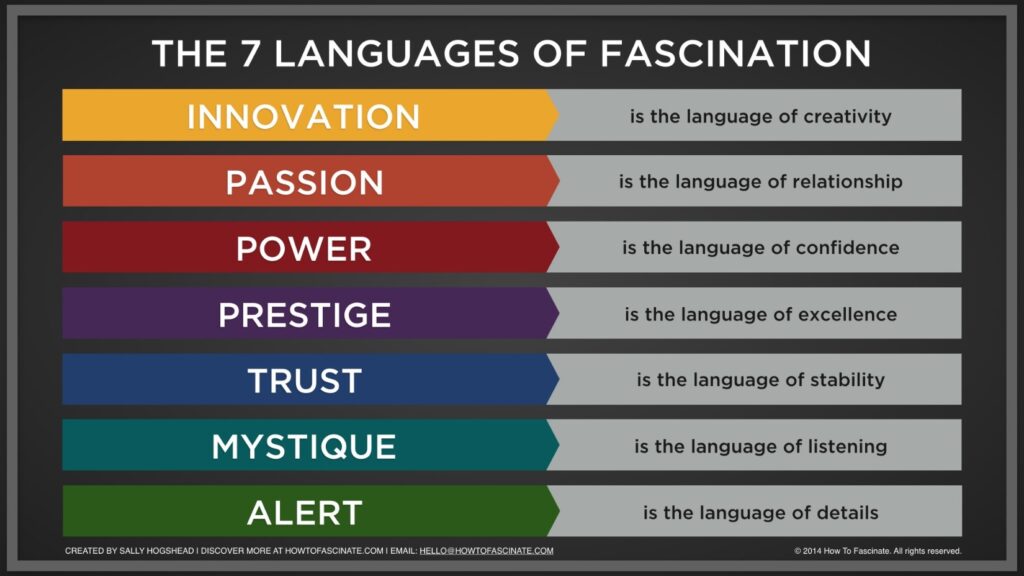
Hogshead’s model is a helpful primer for copywriting for personal brands in all types of industries.
“80% of people behave differently when they’re fascinated by a brand. They do research, talk to friends. In fact, consumers report specific physical responses to fascinating products: a faster heart rate and ‘thrill’ of excitement.“
Source: Sally Hogshead 3Hogshead, S. (2024, October 10). How to Fascinate. https://www.howtofascinate.com/
The 7 Languages of Fascination
What is the language of fascination?
Hogshead’s 49 Personality Archetypes
What type of personality archetype are you?
Learn more: Take Hogshead’s “Fascinate Assessment”
The Online Brain Hypothesis
In the rapidly evolving digital age, how we process information is being transformed. The rise of the internet and its ever-changing stream of information have led to a noticeable shift in our attentional capacities.
“The Internet can alter our cognition, affecting attention, memory, and social cognition, with potential brain changes.”
Source: World Psychiatry 4Firth, J., Torous, J., Stubbs, B., Firth, J., Steiner, G., Smith, L., Alvarez-Jimenez, M., Gleeson, J., Vancampfort, D., Armitage, C., & Sarris, J. (2019). The “online brain”: how the … Continue reading
A study published in the National Center for Biotechnology Information highlights this trend, emphasising how the multitude of online media sources vies for our attention, often at the expense of our ability to concentrate for extended periods. 5Firth, J., Torous, J., Stubbs, B., Firth, J. A., Steiner, G. Z., Smith, L., Gleeson, J., Vancampfort, D., Armitage, C. J., & Sarris, J. (2019). The “online brain”: How the Internet may be … Continue reading
“The human brain’s attention system has evolved over time, with genetic variations and experience playing a role in individual differences in attentional efficiency.”
Source: Annual review of neuroscience 6Petersen, S., & Posner, M. (2012). The attention system of the human brain. Annual review of neuroscience, 35, 73 – 89. https://doi.org/10.1146/annurev-neuro-062111 – 150525
This phenomenon, sometimes called the ‘online brain’, raises critical questions about the long-term effects of digital media on cognitive functions, including memory and focus.
Brains and Narrowing Attention Spans
The broader implications of our interaction with digital media are further underscored by a study in Nature Communications, which reveals a narrowing of our collective attention span. 7Abundance of information narrows our collective attention span. (2019, April 15). ScienceDaily. https://www.sciencedaily.com/releases/2019/04/190415081959.htm
This phenomenon is not just confined to social media; it’s a trend observed across various domains, suggesting a widespread cultural shift in how we consume and process information.
The gradual decline in attention spans, particularly over the last few decades, signals a pressing challenge for today’s organisations. Research by Gloria Mark, PhD, from the University of California Irvine, sheds light on how our engagements with the internet and digital devices reshape our focus. 8Mark, G. (2023). Why our attention spans are shrinking. American Psychological Association. https://www.apa.org/news/podcasts/speaking-of-psychology/attention-spans
The study’s findings are a wake-up call to businesses and content creators, indicating that capturing and maintaining an audience’s attention is becoming more challenging.
Despite the growing concern over the impact of social media and the fast-paced news cycle on our attention spans, a gap in empirical data persists. This lack of concrete evidence points to the necessity for more rigorous research to understand the true extent of mass media’s influence on cognitive functions. 9Abundance of information narrows our collective attention span. (2019, April 15). EurekAlert! https://www.eurekalert.org/news-releases/490177
Learn more: The Online Brain Hypothesis
Social Group Sizes (For Social Brains)
How many social connections you you comfortably sustain? According to the social brain hypothesis, limits exist. 10Zhou WX, Sornette D, Hill RA, Dunbar RI. Discrete hierarchical organization of social group sizes. Proc Biol Sci. 2005 Feb 22;272(1561):439 – 44.
“The ‘social brain hypothesis’ for the evolution of large brains in primates has led to evidence for the coevolution of neocortical size and social group sizes, suggesting that there is a cognitive constraint on group size that depends, in some way, on the volume of neural material available for processing and synthesizing information on social relationships.”
Source: Proceedings of the Royal Society B: Biological Sciences 11Zhou, X., Sornette, D., Hill, R. A., & M. Dunbar, R. I. (2005). Discrete hierarchical organization of social group sizes. Proceedings of the Royal Society B: Biological Sciences, 272(1561), … Continue reading
Scientific evidence suggests that people tend to organise themselves not in an even distribution of group sizes but in discrete hierarchical social groups of more particular sizes:
Alas, there seems to be a discrete statistical order in the complex chaos of human relationships:
“Such discrete scale invariance could be related to that identified in signatures of herding behaviour in financial markets and might reflect a hierarchical processing of social nearness by human brains.“
Source: Proceedings of the Royal Society B: Biological Sciences 12Zhou, X., Sornette, D., Hill, R. A., & M. Dunbar, R. I. (2005). Discrete hierarchical organization of social group sizes. Proceedings of the Royal Society B: Biological Sciences, 272(1561), … Continue reading
Read also: Group Sizes (The Social Brain Hypothesis)
Enter: The Electronic Age
Human culture is often described based on our access to production technologies (e.g., the Stone Age, the Bronze Age, and the Iron Age).
According to Marshall McLuhan and the Toronto School of Communication Theory, a better analysis would be to view societal development based on the prominence of emerging communications technologies.

McLuhan’s Four Epochs
McLuhan suggests dividing human civilisation into four epochs:
“The Gutenberg Galaxy is a landmark book that introduced the concept of the global village and established Marshall McLuhan as the original ‘media guru’, with more than 200,000 copies in print.”
Source: Modern Language Review 13McLuhan, M. (1963). The Gutenberg galaxy: the making of typographic man. Modern Language Review, 58, 542. https://doi.org/10.2307/3719923
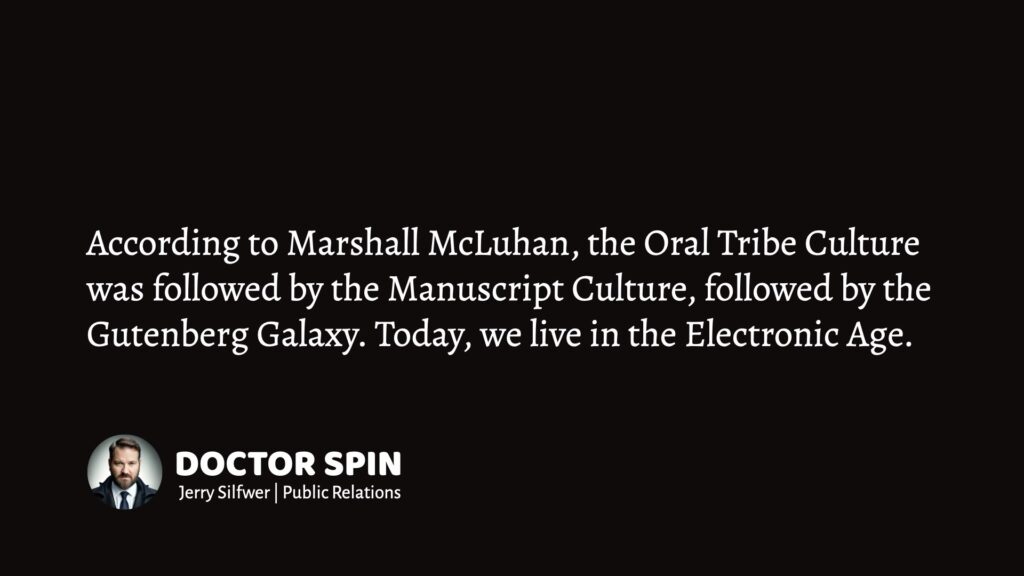
As a PR professional and linguist, I subscribe to the concept of the Electronic Age. I firmly believe society is unlikely to revert to the Gutenberg Galaxy.
Like the rest of society, the PR industry must commit to digital-first, too. Mark my words: It’s all-in or bust.
Read also: The Electronic Age and the End of the Gutenberg Galaxy
Echo Chambers on Digital Platforms
Echo chambers, amplified by confirmation bias and media logic, pose a significant societal problem. They create environments where individuals are exposed primarily to opinions and information that reinforce their existing beliefs, leading to a narrow, often distorted worldview.
“Echo chambers in social media contribute to the viral spread of misinformation by acting as initial bandwagons for complex contagions.”
Source: PLoS ONE 14Törnberg, P. (2018). Echo chambers and viral misinformation: Modeling fake news as complex contagion. PLoS ONE, 13. https://doi.org/10.1371/journal.pone.0203958
In echo chambers, critical thinking and exposure to diverse perspectives are limited, which can contribute to spreading misinformation and entrenching extremist views. 15Silfwer, J. (2018, August 6). How To Fight Populism. Doctor Spin | The PR Blog. https://doctorspin.net/how-to-fight-populism/
“Echo chambers are not just spaces where opinions are excluded, but also spaces where beliefs are reinforced, contributing to misinformation and collaborative resistance.”
Source: Episteme 16Elzinga, B. (2020). Echo Chambers and Audio Signal Processing. Episteme, 19, 373 — 393. https://doi.org/10.1017/epi.2020.33
Such isolation can intensify ideological polarisation, diminishing the opportunity for constructive dialogue and understanding between different groups.
Echo chambers can undermine the democratic process by creating fragmented publics, each with its own ‘facts’ and interpretations, making consensus and collaborative problem-solving increasingly challenging.
“Echo chambers and epistemic bubbles are distinct social epistemic phenomena, and addressing them requires distinct interventions.”
Source: Episteme 17Nguyen, C. (2018). ECHO CHAMBERS AND EPISTEMIC BUBBLES. Episteme, 17, 141 — 161. https://doi.org/10.1017/epi.2018.32
Learn more: Echo Chambers: Algorithmic Confirmation Bias
Walter Lippmann and Perception Management
In his seminal work Public Opinion (1922), Walter Lippmann laid the intellectual groundwork for the idea that perception and reality are not the same — a core principle of modern perception management. 18Lippmann, Walter. 1960. Public Opinion (1922). New York: Macmillan.
Lippmann argued that:
Lippmann’s ideas resonate deeply with perception management in public relations.
“We are all captives of the picture in our head — our belief that the world we have experienced is the world that really exists.”
— Walter Lippmann (1889 – 1974)
On Creating Pseudo-Environments
Lippmann coined the term “pseudo-environment,” which describes the filtered, biased, and often artificial version of reality presented by the media. He warned that influential elites could exploit this manufactured reality to manipulate public thought and behaviour.
Lippmann was sceptical about the public’s ability to discern reality from the pseudo-environment, which raises ethical concerns:
Perception management is not inherently sinister, but as Lippmann warned, it places immense power in the hands of those controlling the narrative.
In essence, perception management is the applied PR version of Lippmann’s media critique. It acknowledges that facts alone do not win public trust—priming, framing, storytelling, and emotional appeal do.
Learn more: Perception Management
Our Attention Is Not Well-Understood
Despite the growing concern over the impact of social media and the fast-paced news cycle on our attention spans, a gap in empirical data persists. This lack of concrete evidence points to the necessity for more rigorous research to understand the true extent of mass media’s influence on cognitive functions. 19Abundance of information narrows our collective attention span. (2019, April 15). EurekAlert! https://www.eurekalert.org/news-releases/490177
For business leaders, this calls for a cautious approach to concluding the impact of digital media on attention spans. Rather than making hasty decisions based on anecdotal evidence, organisational strategies must be based on solid research.
This could involve collaborating with academic institutions or investing in in-house studies to explore how digital media consumption affects employee performance and consumer behaviour.
In an era where data-driven decision-making is paramount, filling this empirical gap will help develop more effective business strategies and contribute to a broader understanding of perception management.

THANKS FOR READING.
Need PR help? Hire me here.

Annotations
| 1 | Shipp, S. (2004). The brain circuitry of attention. Trends in Cognitive Sciences, 8, 223 – 230. https://doi.org/10.1016/j.tics.2004.03.004 |
|---|---|
| 2 | Schweizer, K., Moosbrugger, H., & Goldhammer, F. (2005). The structure of the relationship between attention and intelligence. Intelligence, 33(6), 589 – 611. https://doi.org/10.1016/j.intell.2005.07.001 |
| 3 | Hogshead, S. (2024, October 10). How to Fascinate. https://www.howtofascinate.com/ |
| 4 | Firth, J., Torous, J., Stubbs, B., Firth, J., Steiner, G., Smith, L., Alvarez-Jimenez, M., Gleeson, J., Vancampfort, D., Armitage, C., & Sarris, J. (2019). The “online brain”: how the Internet may be changing our cognition. World Psychiatry, 18. https://doi.org/10.1002/wps.20617 |
| 5 | Firth, J., Torous, J., Stubbs, B., Firth, J. A., Steiner, G. Z., Smith, L., Gleeson, J., Vancampfort, D., Armitage, C. J., & Sarris, J. (2019). The “online brain”: How the Internet may be changing our cognition. World Psychiatry, 18(2), 119 – 129. https://doi.org/10.1002/wps.20617 |
| 6 | Petersen, S., & Posner, M. (2012). The attention system of the human brain. Annual review of neuroscience, 35, 73 – 89. https://doi.org/10.1146/annurev-neuro-062111 – 150525 |
| 7 | Abundance of information narrows our collective attention span. (2019, April 15). ScienceDaily. https://www.sciencedaily.com/releases/2019/04/190415081959.htm |
| 8 | Mark, G. (2023). Why our attention spans are shrinking. American Psychological Association. https://www.apa.org/news/podcasts/speaking-of-psychology/attention-spans |
| 9, 19 | Abundance of information narrows our collective attention span. (2019, April 15). EurekAlert! https://www.eurekalert.org/news-releases/490177 |
| 10 | Zhou WX, Sornette D, Hill RA, Dunbar RI. Discrete hierarchical organization of social group sizes. Proc Biol Sci. 2005 Feb 22;272(1561):439 – 44. |
| 11, 12 | Zhou, X., Sornette, D., Hill, R. A., & M. Dunbar, R. I. (2005). Discrete hierarchical organization of social group sizes. Proceedings of the Royal Society B: Biological Sciences, 272(1561), 439 – 444. https://doi.org/10.1098/rspb.2004.2970 |
| 13 | McLuhan, M. (1963). The Gutenberg galaxy: the making of typographic man. Modern Language Review, 58, 542. https://doi.org/10.2307/3719923 |
| 14 | Törnberg, P. (2018). Echo chambers and viral misinformation: Modeling fake news as complex contagion. PLoS ONE, 13. https://doi.org/10.1371/journal.pone.0203958 |
| 15 | Silfwer, J. (2018, August 6). How To Fight Populism. Doctor Spin | The PR Blog. https://doctorspin.net/how-to-fight-populism/ |
| 16 | Elzinga, B. (2020). Echo Chambers and Audio Signal Processing. Episteme, 19, 373 — 393. https://doi.org/10.1017/epi.2020.33 |
| 17 | Nguyen, C. (2018). ECHO CHAMBERS AND EPISTEMIC BUBBLES. Episteme, 17, 141 — 161. https://doi.org/10.1017/epi.2018.32 |
| 18 | Lippmann, Walter. 1960. Public Opinion (1922). New York: Macmillan. |

